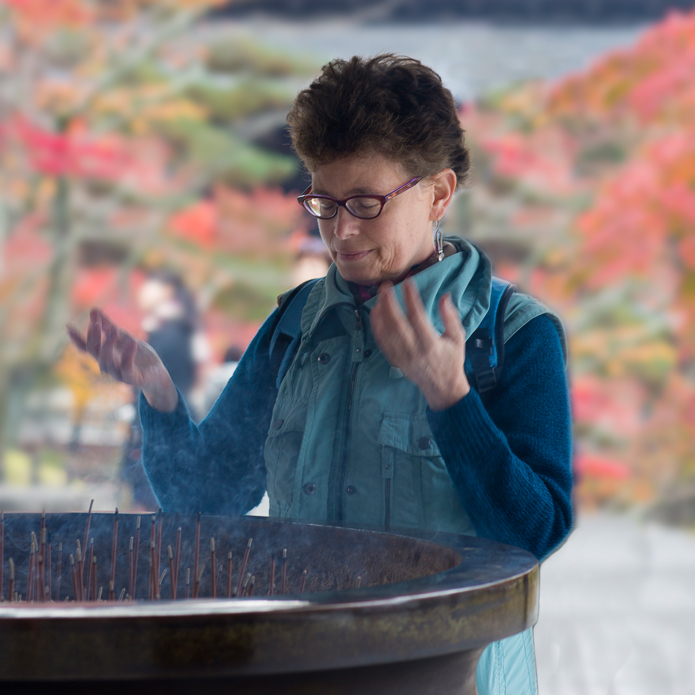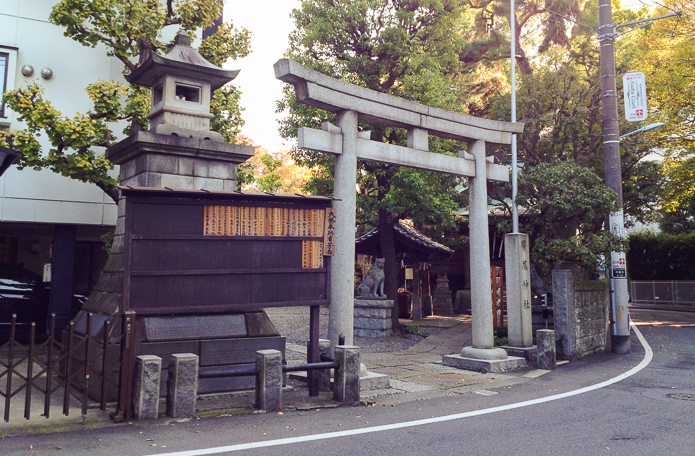In this one–hour video (in two parts), I tell the story of how I started on the Neutron Trail and where it led me, with a focus on my time in Tokyo, Hiroshima and Nagasaki.
The video is of a talk I gave in Vancouver on March 10, 2015, but with full frame photos of my travels, taken by myself, Noriko Nasu Tidball and Stephen Imbler. A big thank you also to Diane Park for the skill and care she brought to post production.
There are many more people to thank listed on the Credits page for this most rewarding Neutron Trail journey I’ve been privileged to travel – both to actual places and to heart opening spaces. I look forward to sharing all that I’ve learned and continue to grow into – though no longer primarily with neutrontrail.com. I’m continuing to write on other platforms. Please call on me for individual counselling & coaching and classes. Blessings on your journey of inner and outer growth.
~ ~ ~
Today is the 70th anniversary of the atomic bombing on Hiroshima, Japan on August 6, 1945. Germany had fallen some months earlier and World War II ended on August 9, 1945, when the US dropped a second atomic bomb on Nagasaki. As many as 200,000 Japanese civilians were killed by the two bombs. In all, 50 – 70 million people, primarily in Europe and South East Asia, died during the war — one of the deadliest events in human history. From here, World War II looks like a series of wars waged as nationalistic drives for conquest of other nations and peoples. What do we need to learn from this tragedy — about shared existence — that we can apply to surviving and thriving on a planet with 7.3 billion of us and counting?.
A few weeks ago, a biographer of Enrico Fermi contacted me with evidence that in June 1945, my grandfather had fought with Oppenheimer, Compton and Lawrence that they should advise President Truman not to demonstrate the bomb let alone drop it.
“It had been the normally taciturn Fermi, so Oppenheimer reported… who had resisted him most stubbornly… Men will always fight wars, Enrico had argued. One could not responsibly place nuclear weapons into circulation. Their existence had to remain concealed as long as possible. It took the others until after 5 am [the next day] on Sunday, June 17, to ‘talk him down,’ recalled Oppenheimer…”
— Day One: Before Hiroshima and After, New York (1985), by Peter H. Wyden, pp. 170–171.]
Learning of my grandfather’s courage, 70 years later, touched me deeply. I imagined him standing up to the vast and complex forces of history as he argued with his boss, all the while clearly knowing he was simply one person with one voice. Even if Enrico had succeeded to convince Oppenheimer to warn Truman off, it’s unlikely if not impossible that the scientists’ voices could have stopped the tremendous forces at play pushing the bomb to be used.
Anniversaries are a time to contemplate where we’ve been and where to next. As this anniversary approached, I realized my pilgrimage to Japan, at the end of last year, marked the culmination of a journey along the Neutron Trail I’d started in 2009, visiting the sites related to the development and use of the first atomic weapons.
The Japan I encountered was the one I was hoping to find, that continues despite modernity and foreign influence, to be, in many ways an interconnected and caring culture with traditional elements intact. (Hopefully the abatement of its aggressive military culture since World War II will continue and be matched by all nations.) Caring shows up in so many ways — as a visitor I experienced it in the efficiency of the trains, the stylish care infused into all human–created objects, that we bow to each other and for me most fundamentally of all, in prayer.
I didn’t grow up with prayer, but I’ve come to realize how enriching it is for human life. Normally we go about our day and get more and more caught up in the illusions of successes and failures, accomplishments and defeats. Prayer offers a natural pause, like a cup of tea, a place to stop and surrender to the divine, to the mystery of life and death, the emptiness and fullness of being. Prayer is a place to dissolve, to offer, to receive.
Japan is set up in way that supports prayer whenever we are willing to find a moment to give over, to rediscover in freshness our place in the larger scheme of life. One tangible way I saw prayer being welcomed into daily life was in the open invitation to walk through the torii gates of the shrines and temples sprinkled virtually everywhere in the big cities and the small villages alike. When I saw a shrine, I paused at the threshold and bowed, walked through and bowed again. Inside there was water to ceremonially cleanse and offer. Further inside, there were more places and ways to pray.
Visiting Hiroshima and Nagasaki brought me face to face with the horror and tragedy Japan has had to recover from. We all pray for ourselves, our families. The Japanese also pray for all of us, for world peace. In 70 years, since the end of World War II, that’s a lot of prayers. I’m sensitive and I felt them, especially in the Nagasaki Peace Park, where I was fortunate to meet an atomic bomb survivor who has dedicated his life to peace.
“Nuclear war ended in Nagasaki! Nagasaki is the period! Peace starts from Nagasaki!” – Takashi Nagai (永井 隆), Peace Tower
Travelling in Japan, prayer in public became a nurturing part of my day. Back home in Vancouver, my heart couldn’t quite settle. I longed for the open temple gates, feeling a kind of reverse homesickness. Like the torii, which supported me to flow so easily between the sacred and secular, some new gateway had opened in my heart during those three weeks away.
I want to keep the gates open — and open them more. Connecting through prayer is a shared human experience, giving us a sense of humility of place and interdependent belonging. Today on Hiroshima Day, I long for all cultures to learn from Japanese prayer culture, to find ways to honor the sacred in the secular and to see the secular in the sacred. Perhaps prayer can help us find our way to an healthy, happy existence together on our little blue planet Earth.

Olivia Fermi offers prayer at Nanzen-ji temple, Kyoto Japan. Photo: Noriko Nasu Tidball © 2014.



 Twitter
Twitter
One Response to Hiroshima Day Prayer for the World